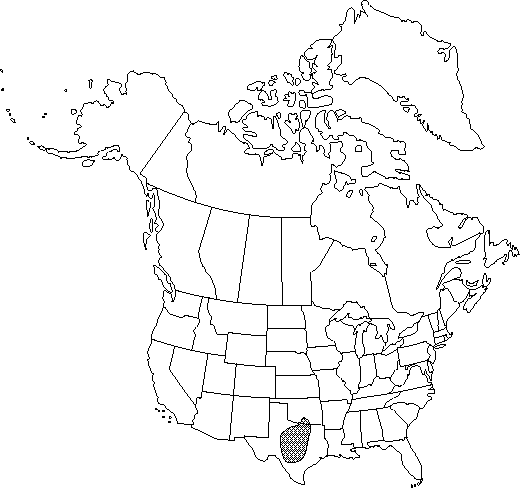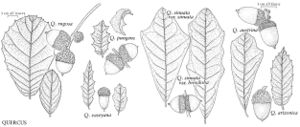Quercus sinuata var. breviloba
J. Arnold Arbor. 25: 439. 1944.
Shrubs or trees, rarely small, usually moderate, (0.5-) 1-3 (-5) m, often clonal with multiple trunks. Leaves: petiole 2-3 mm. Leaf-blade (25-) 30-60 (-100) × (15-) 20-40 (-60) mm. Acorns: cup saucer-shaped to shallowly cupshaped, rarely deeper, to 3-8 mm deep × 8-12 mm wide, enclosing 1/4 nut, rarely more, base flat, rounded, or constricted, margin thin; nut depressed-ovoid to oblong, 7-12 (-15) × 7-10 mm, glabrous.
Phenology: Flowering spring.
Habitat: Open oak woodlands, dry scrublands, margins of grasslands, and along streams and arroyos, on limestone, rarely on granitics
Elevation: 200-600 m
Distribution

Okla., Tex., Mexico (Coahuila), Mexico (Nuevo León), Mexico (and Tamaulipas)
Discussion
Quercus sinuata var. breviloba replaces var. sinuata on the Edwards Plateau of Texas and extends south at lower elevations along the eastern side of Sierra Madre Oriental in northern Nuevo León and Tamaulipas. Although habitats of these two varieties are very different, along streams through limestone hills in central Texas the two varieties are in contact, and numerous problematic, morphologically intermediate forms may be found. The lack of broad geographic sympatry and intergradation argue for the treatment of these two taxa at varietal rank.
Selected References
None.
